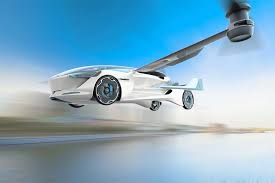
Breaking News
 Calling Dr. Grok. Can AI Do Better than Your Primary Physician?
Calling Dr. Grok. Can AI Do Better than Your Primary Physician?
 Episode 485 - The Dark Legacy of Dick Cheney
Episode 485 - The Dark Legacy of Dick Cheney
 Frugal Friday: 17 Ways to "Use It Up"
Frugal Friday: 17 Ways to "Use It Up"
 Cristiano Ronaldo Praises Donald Trump as a Leader Capable of Changing the World...
Cristiano Ronaldo Praises Donald Trump as a Leader Capable of Changing the World...
Top Tech News
 HUGE 32kWh LiFePO4 DIY Battery w/ 628Ah Cells! 90 Minute Build
HUGE 32kWh LiFePO4 DIY Battery w/ 628Ah Cells! 90 Minute Build
 What Has Bitcoin Become 17 Years After Satoshi Nakamoto Published The Whitepaper?
What Has Bitcoin Become 17 Years After Satoshi Nakamoto Published The Whitepaper?
 Japan just injected artificial blood into a human. No blood type needed. No refrigeration.
Japan just injected artificial blood into a human. No blood type needed. No refrigeration.
 The 6 Best LLM Tools To Run Models Locally
The 6 Best LLM Tools To Run Models Locally
 Testing My First Sodium-Ion Solar Battery
Testing My First Sodium-Ion Solar Battery
 A man once paralyzed from the waist down now stands on his own, not with machines or wires,...
A man once paralyzed from the waist down now stands on his own, not with machines or wires,...
 Review: Thumb-sized thermal camera turns your phone into a smart tool
Review: Thumb-sized thermal camera turns your phone into a smart tool
 Army To Bring Nuclear Microreactors To Its Bases By 2028
Army To Bring Nuclear Microreactors To Its Bases By 2028
 Nissan Says It's On Track For Solid-State Batteries That Double EV Range By 2028
Nissan Says It's On Track For Solid-State Batteries That Double EV Range By 2028
AeroMobil reveals electric VTOL flying car concept

Like Terrafugia and Pal-V, AeroMobil has developed a flying car/roadable aircraft that requires a runway in order to take off and land. This Wednesday, however, the Slovakia-based company announced its plans for an electric VTOL (vertical take-off and landing) model.
Called the AeroMobil 5.0 VTOL, the four-seat electric vehicle will perform vertical take-offs and landings using a set of rotors located on the ends of each of its wings – those wings will fold back when it's in "ground mode." Once the vehicle is airborne, a pusher prop in the rear will propel it forward.
The company states that the 5.0 will be capable of autonomous flight, which raises the question of whether or not a pilot's license will be required in order to fly it – one will be required for the existing non-VTOL combustion-engined AeroMobil 4.0 STOL (short take-off and landing).
Ultimately, it is hoped that the two models will complement one another.
"The multi-product strategy means we can provide urban travel with the AeroMobil 5.0 VTOL and intra-city travel with the AeroMobil 4.0 STOL," says CEO Juraj Vaculik. "Our strategy solves the limitations of alternative VTOL concepts which are tied to dedicated landing pods rather than also using the existing road infrastructure."


 Carbon based computers that run on iron
Carbon based computers that run on iron

